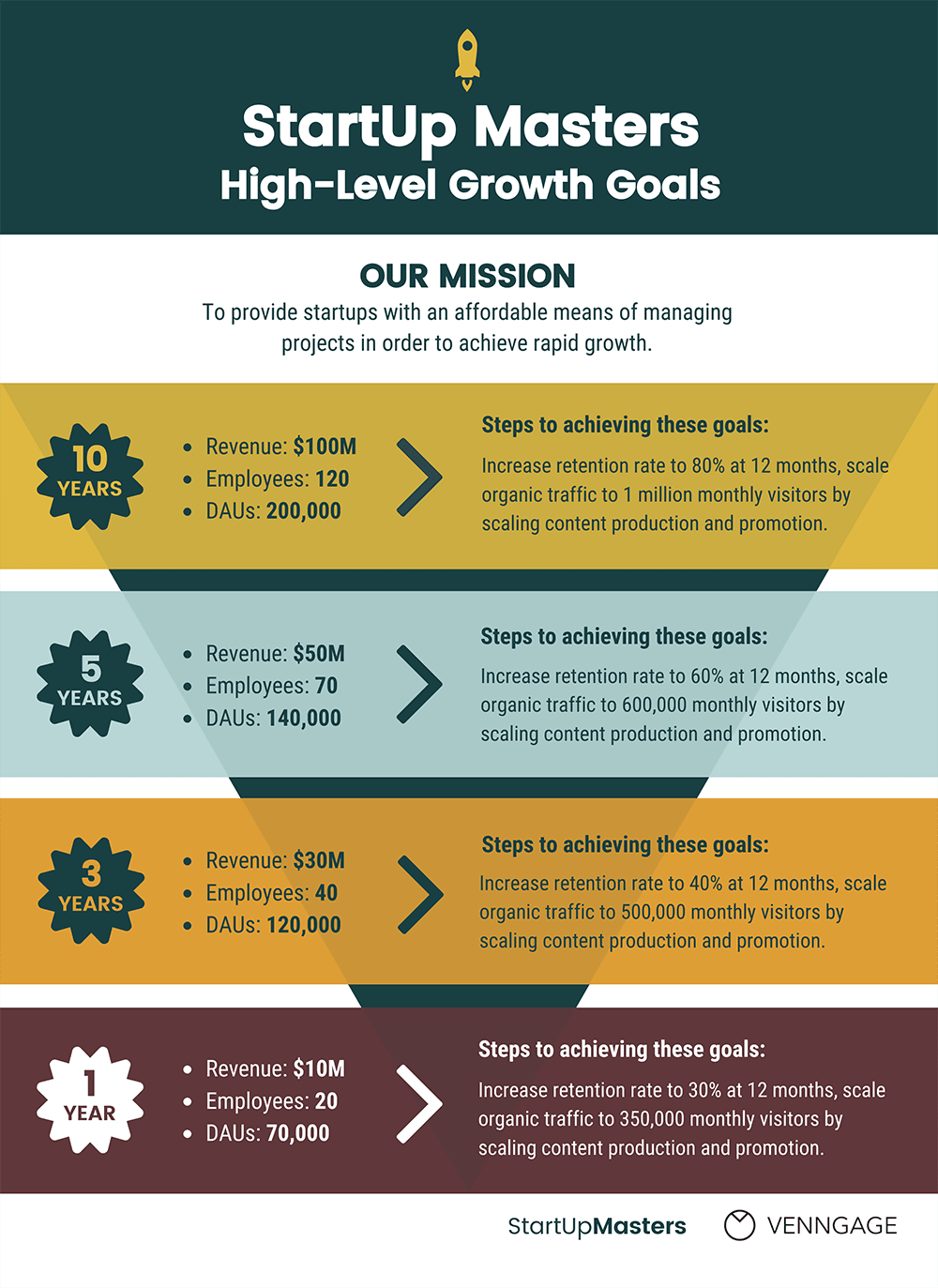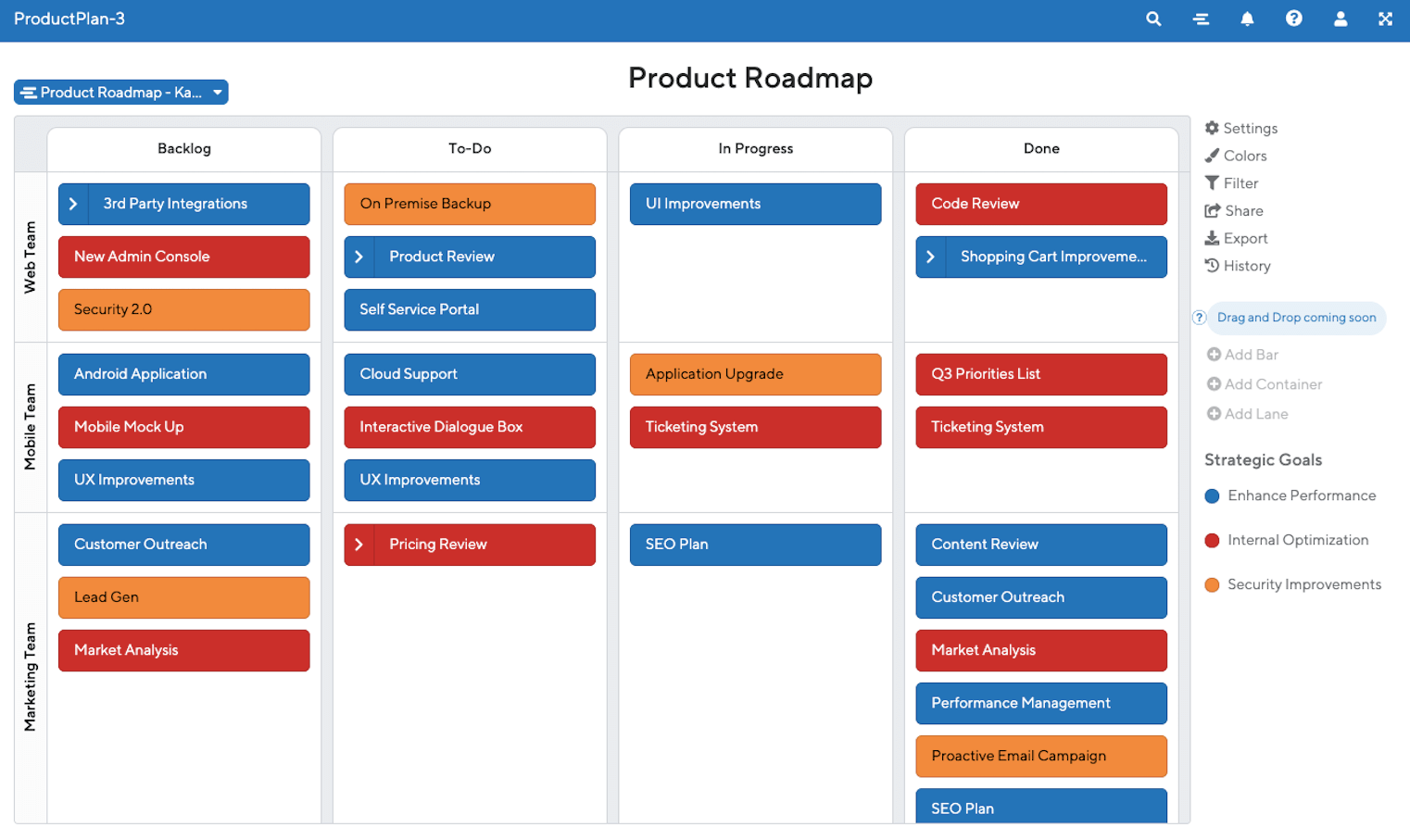A product roadmap is a document that includes a company’s product vision, plan, metrics, strategy, and requirements. It’s a reference point that helps different teams understand how to contribute to product success and how it will evolve in the future.
In this article, we’ll find out why businesses need a product roadmap, review its types and examples, and unveil how to create a product roadmap.
Why do you need a product roadmap?
Companies develop product roadmaps to reach out to stakeholders and explain the importance of their products. They highlight the most important aspects of their product development: clear objectives, teams involved, features, releases, etc. This document helps companies manage their teamwork, stay relevant in a competitive environment, and comply with customers’ requirements. The roadmap aligns with a company’s main business strategy and can have some alterations based on certain changes in customer behavior, demand, or improvements in competitors’ products.
The document can be created for different purposes and serve various departments: development team, sales representatives, or executives. With its help, team members and partners can have a strategic vision of their product. Product roadmapі can also motivate teams to achieve their company’s business goals faster. It encompasses updates on work statuses and product improvement and provides a clear picture of a company’s product development progress.
Now that you know the advantages of product roadmaps, we’ll proceed to the next section to explore their main types.
Types of Product Roadmaps
Product roadmaps can be divided into two main groups:
- Internal roadmap. It’s created for internal use, and sales and development departments use them to explore product details, features, brand goals, and customer benefits. It provides a company’s teams with information about the stages of product development so that they have a clear understanding of their progress. This information can be shared only with certain company departments.
- External roadmap. A business develops an external roadmap to communicate the benefits of its product to consumers. Marketers also share this type of roadmap with partners, the press, and analysts. An external roadmap doesn’t include some specific data about a product but highlights all the benefits it can bring to consumers.
We can also differentiate the following types of roadmaps:
- Features roadmap. It tells when to deliver some new features to a target audience. Features roadmap informs about the details of new product features and dates they will be available for customers.
- Strategy roadmap. It encompasses the initiatives a company should invest in to attain specific goals. This roadmap is necessary for presenting your efforts to executives. Moreover, a strategy roadmap is essential for internal teams since it helps understand how releases influence a company’s overall business strategy.
- Releases roadmap. It entails a series of actions a company’s teams should perform before their product release dates. The roadmap includes tasks, assignees, and their responsibilities. With its help, sales, marketing, and support teams can sync their efforts and work towards the common good.
Now that you know the types of roadmaps, let’s unveil how to create them for your business.
How to Create a Product Roadmap
We’ve prepared the four main steps you need to consider when developing a great product roadmap.
- Decide on your product strategy. It implies creating a detailed plan in which companies define what they want to achieve with their product and decide on some possible ways to do it. It also encompasses a description of a company’s buyer persona and the benefits it can bring to consumers. Apart from that, you should include the differentiators of your product that help it stand out among competitors. This information is essential for stakeholders who want to know the goals a product can attain and decide whether they should invest.
- Gather information about your product. To do it, you need to gather information from different sources. Firstly, it’s advisable to communicate with sales and customer support teams to receive first-hand information about your customers. These departments usually have a lot of information about clients and their feedback. Adding new features or implementing great ideas for new releases might help improve your product. Secondly, interact with your community. People who have used your product for a long time definitely know its advantages and disadvantages. Thirdly, use your product knowledge. When you know about your product’s key features, strengths, and weaknesses, you can easily think of what components are the most valuable for your customers. After that, invest some time in eliminating your products’ possible and existing drawbacks.
- Set a timeframe. Hard deadlines make teams give promises they can’t keep. Remember, the main aim of your product roadmap is to guide, not to limit. That’s why it’s more efficient to give team members enough space and time to execute the necessary tasks.
- Prepare your roadmap for stakeholders. A product often needs financial help from stakeholders to succeed. You can encourage your partners to support your company during product development by creating and customizing a roadmap that highlights the points stakeholders might be interested in. Don’t forget to mention specific product features, your potential to generate sales, your product’s ability to stand out among competitors, release dates, benefits, etc.
Let’s take a look at several examples of product roadmaps.
Examples of Roadmaps
There are different product roadmaps you can use for your company’s purposes. Now we’ll look at various roadmaps to see the difference between them and help you decide which one is best for you.
Stakeholders and executives use release plans to see the schedule of their upcoming releases. It’s a detailed roadmap that encompasses tasks and timeframes for different teams. It provides departments with a clear understanding of their upcoming releases, new features, and the latest versions of a product.

You can also consider creating roadmap infographics to depict all the product development processes. Use ready-made templates to design a roadmap to your liking. You can see one of the greatest examples of roadmap infographics below.

A Kanban roadmap helps a company’s development teams divide the tasks into several groups: backlog, planned, in progress, and completed. The main advantage of Kanban is that teams can follow their plans without references to exact dates. You can show that you are working on a specific task and motivate the rest of your team by telling them about your progress.
You can see an example of a Kanban roadmap below.

Congrats, now you know the reasons to create a product roadmap, its types, and several examples. Make use of our guide to develop a roadmap for your product.
Resources:
- In this article, you’ll find the types of product roadmaps.
- This article provides readers with a guide to product roadmaps.
- This article unveils the importance of a product roadmap, explores its types, and provides readers with a guide on how to create it.
Last Updated: 22.03.2023

or